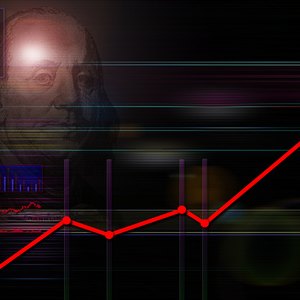
Investors use technical analysis on stock market or Forex (foreign exchange) charts, studying a range of technical indicators to help them make trading decisions. Stochastics and MACDs are technical indicators that any charting software or online charting service will make available along with the charts they provide.
Stochastic oscillators are mainly useful when the market is in a trading range, but can be useful when a trend has pullbacks and forms a zigzag pattern, which is common. The MACD indicator is more useful in a trending market than a ranging one, unlike the stochastic oscillator. This makes them a good pair to use to filter false signals.
Check whether the market is trending or in a trading range before looking at the stochastic indicator. Remember, it is more accurate if the market is ranging. If the price has been making continually higher highs and higher lows, it is trending upwards, and vice versa. If the price moves up and down within a set price band, it is in a trading range.
Select the slow stochastic on your chart. There are fast, slow and full stochastics, but the slow stochastic is the most popular, as it produces the fewest false signals.
Look to see if the stochastic signal line is above 80 or below 20. If it is over 80, it is likely that the shares or currency are overbought and likely to fall. If it is below 20, the opposite is probable.
Look to see which way the price is going on the chart. If it is going down, but the stochastic indicator line is going up, or vice versa, a bullish (rising market) or bearish (falling market) divergence is showing, meaning the trend will possibly change in that direction.
Now look at the current position of the MACD (Moving Average Convergence Divergence) indicator. Use the standard settings for the MACD. Point your cursor over each indicator line on the MACD; a box will tell you which is the MACD line and which is the signal line. When the MACD crosses up over the signal line it is a bullish indicator, and vice versa if it crosses down. A crossover above the zero line is more bullish than one below it; a negative crossover below the line is more bearish.
Also look for divergence between the MACD indicator and price direction as you did with the stochastic indicator.
Make the trade if the interpretation of the MACD and the stochastic oscillator matches, indicating a buy or a sell.
Tips
A drop down box on or near your chart will list your choice of indicators. Stochastic oscillators and MACD indicators, when selected, will be shown beneath the chart.
The stochastic oscillator measures the momentum of the market which usually changes before price. The stochastic is therefore a leading indicator. The MACD is a lagging indicator based on moving averages. It is good to use both a leading and lagging indicator in combination, rather than two of the same kind.
Warnings
This information should not be used for very short-term trading, or "scalping," as it is known.
Also use fundamental analysis such as studying company news and performance before making a trading decision.
References
Resources
Tips
- A drop down box on or near your chart will list your choice of indicators. Stochastic oscillators and MACD indicators, when selected, will be shown beneath the chart.
- The stochastic oscillator measures the momentum of the market which usually changes before price. The stochastic is therefore a leading indicator. The MACD is a lagging indicator based on moving averages. It is good to use both a leading and lagging indicator in combination, rather than two of the same kind.
Warnings
- This information should not be used for very short-term trading, or "scalping," as it is known.
- Also use fundamental analysis such as studying company news and performance before making a trading decision.
Writer Bio
Steve Sparkes started writing professionally in 1982. He was a journalist and photographer for "The New York Waste" magazine for a decade. Sparkes has a diploma of art and design and a Bachelor of Arts in history of art from the South-East Essex School of Art. He also has a Master of Arts in photography from the London School of Printing and Graphic Arts.

